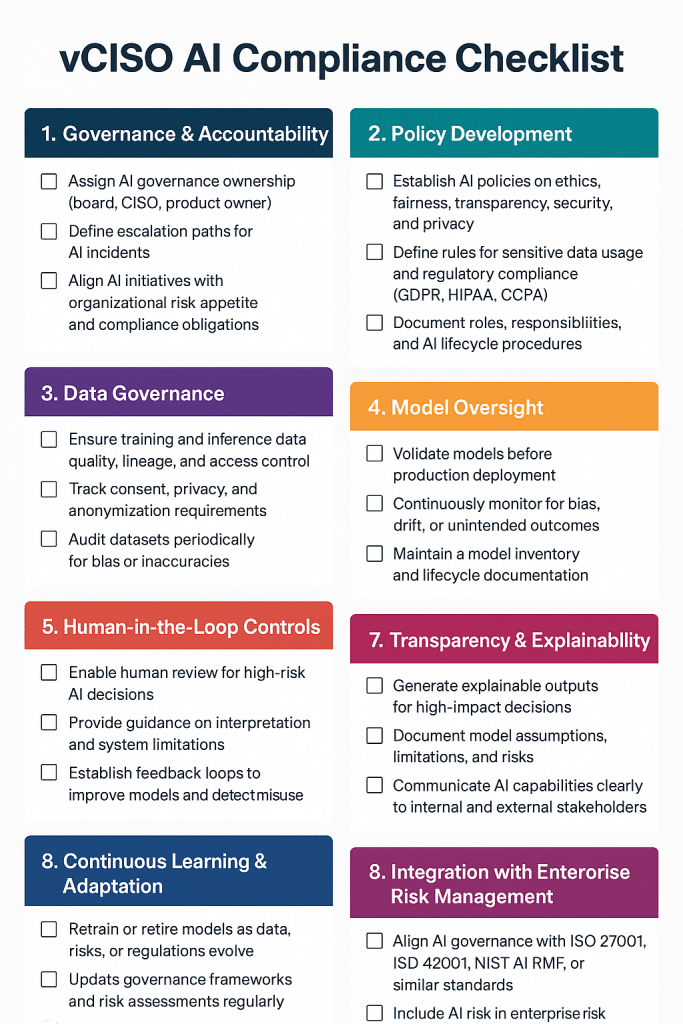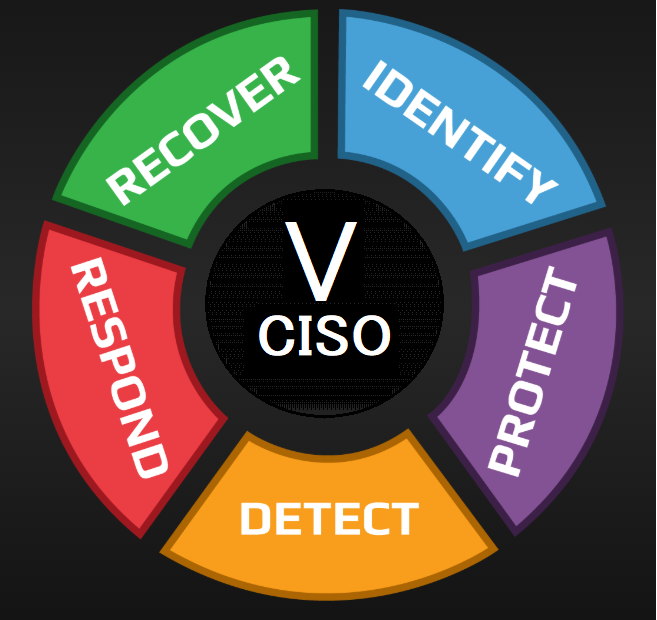Summary of the “Responsible use of AI” section from the Amazon Web Services (AWS) Cloud Adoption Framework for AI, ML, and Generative AI (“CAF-AI”)
Organizations using AI must adopt governance practices that enable trust, transparency, and ethical deployment. In the governance perspective of CAF-AI, AWS highlights that as AI scale grows, Deployment practices must also guarantee alignment with business priorities, ethical norms, data quality, and regulatory obligations.
A new foundational capability named “Responsible use of AI” is introduced. This capability is added alongside others such as risk management and data curation. Its aim is to enable organizations to foster ongoing innovation while ensuring that AI systems are used in a manner consistent with acceptable ethical and societal norms.
Responsible AI emphasizes mechanisms to monitor systems, evaluate their performance (and unintended outcomes), define and enforce policies, and ensure systems are updated when needed. Organizations are encouraged to build oversight mechanisms for model behaviour, bias, fairness, and transparency.
The lifecycle of AI deployments must incorporate controls for data governance (both for training and inference), model validation and continuous monitoring, and human oversight where decisions have significant impact. This ensures that AI is not a “black box” but a system whose effects can be understood and managed.
The paper points out that as organizations scale AI initiatives—from pilot to production to enterprise-wide roll-out—the challenges evolve: data drift, model degradation, new risks, regulatory change, and cost structures become more complex. Proactive governance and responsible-use frameworks help anticipate and manage these shifts.
Part of responsible usage also involves aligning AI systems with societal values — ensuring fairness (avoiding discrimination), explainability (making results understandable), privacy and security (handling data appropriately), robust behaviour (resilience to misuse or unexpected inputs), and transparency (users know what the system is doing).
From a practical standpoint, embedding responsible-AI practices means defining who in the organization is accountable (e.g., data scientists, product owners, governance team), setting clear criteria for safe use, documenting limitations of the systems, and providing users with feedback or recourse when outcomes go astray.
It also means continuous learning: organizations must update policies, retrain or retire models if they become unreliable, adapt to new regulations, and evolve their guardrails and monitoring as AI capabilities advance (especially generative AI). The whitepaper stresses a journey, not a one-time fix.
Ultimately, AWS frames responsible use of AI not just as a compliance burden, but as a competitive advantage: organizations that shape, monitor, and govern their AI systems well can build trust with customers, reduce risk (legal, reputational, operational), and scale AI more confidently.
My opinion:
Given my background in information security and compliance, this responsible-AI framing resonates strongly. The shift to view responsible use of AI as a foundational capability aligns with the risk-centric mindset you already bring to vCISO work. In practice, I believe the most valuable elements are: (a) embedding human-in-the-loop and oversight especially where decisions impact individuals; (b) ensuring ongoing monitoring of models for drift and unintended bias; (c) making clear disclosures and transparency about AI system limitations; and (d) viewing governance not as a one-off checklist but as an evolving process tied to business outcomes and regulatory change.
In short: responsible use of AI is not just ethical “nice to have” — it’s essential for sustainable, trustworthy AI deployment and an important differentiator for service providers (such as vCISOs) who guide clients through AI adoption and its risks.
Here’s a concise, ready-to-use vCISO AI Compliance Checklist based on the AWS Responsible Use of AI guidance, tailored for small to mid-sized enterprises or client advisory use. It’s structured for practicality—one page, action-oriented, and easy to share with executives or operational teams.
vCISO AI Compliance Checklist
1. Governance & Accountability
- Assign AI governance ownership (board, CISO, product owner).
- Define escalation paths for AI incidents.
- Align AI initiatives with organizational risk appetite and compliance obligations.
2. Policy Development
- Establish AI policies on ethics, fairness, transparency, security, and privacy.
- Define rules for sensitive data usage and regulatory compliance (GDPR, HIPAA, CCPA).
- Document roles, responsibilities, and AI lifecycle procedures.
3. Data Governance
- Ensure training and inference data quality, lineage, and access control.
- Track consent, privacy, and anonymization requirements.
- Audit datasets periodically for bias or inaccuracies.
4. Model Oversight
- Validate models before production deployment.
- Continuously monitor for bias, drift, or unintended outcomes.
- Maintain a model inventory and lifecycle documentation.
5. Monitoring & Logging
- Implement logging of AI inputs, outputs, and behaviors.
- Deploy anomaly detection for unusual or harmful results.
- Retain logs for audits, investigations, and compliance reporting.
6. Human-in-the-Loop Controls
- Enable human review for high-risk AI decisions.
- Provide guidance on interpretation and system limitations.
- Establish feedback loops to improve models and detect misuse.
7. Transparency & Explainability
- Generate explainable outputs for high-impact decisions.
- Document model assumptions, limitations, and risks.
- Communicate AI capabilities clearly to internal and external stakeholders.
8. Continuous Learning & Adaptation
- Retrain or retire models as data, risks, or regulations evolve.
- Update governance frameworks and risk assessments regularly.
- Monitor emerging AI threats, vulnerabilities, and best practices.
9. Integration with Enterprise Risk Management
- Align AI governance with ISO 27001, ISO 42001, NIST AI RMF, or similar standards.
- Include AI risk in enterprise risk management dashboards.
- Report responsible AI metrics to executives and boards.
✅ Tip for vCISOs: Use this checklist as a living document. Review it quarterly or when major AI projects are launched, ensuring policies and monitoring evolve alongside technology and regulatory changes.
Download vCISO AI Compliance Checklist

Click the ISO 42001 Awareness Quiz — it will open in your browser in full-screen mode
Protect your AI systems — make compliance predictable.
Expert ISO-42001 readiness for small & mid-size orgs. Get a AI Risk vCISO-grade program without the full-time cost.
Secure Your Business. Simplify Compliance. Gain Peace of Mind
Check out our earlier posts on AI-related topics: AI topic
InfoSec services | InfoSec books | Follow our blog | DISC llc is listed on The vCISO Directory | ISO 27k Chat bot | Comprehensive vCISO Services | ISMS Services | Security Risk Assessment Services | Mergers and Acquisition Security




